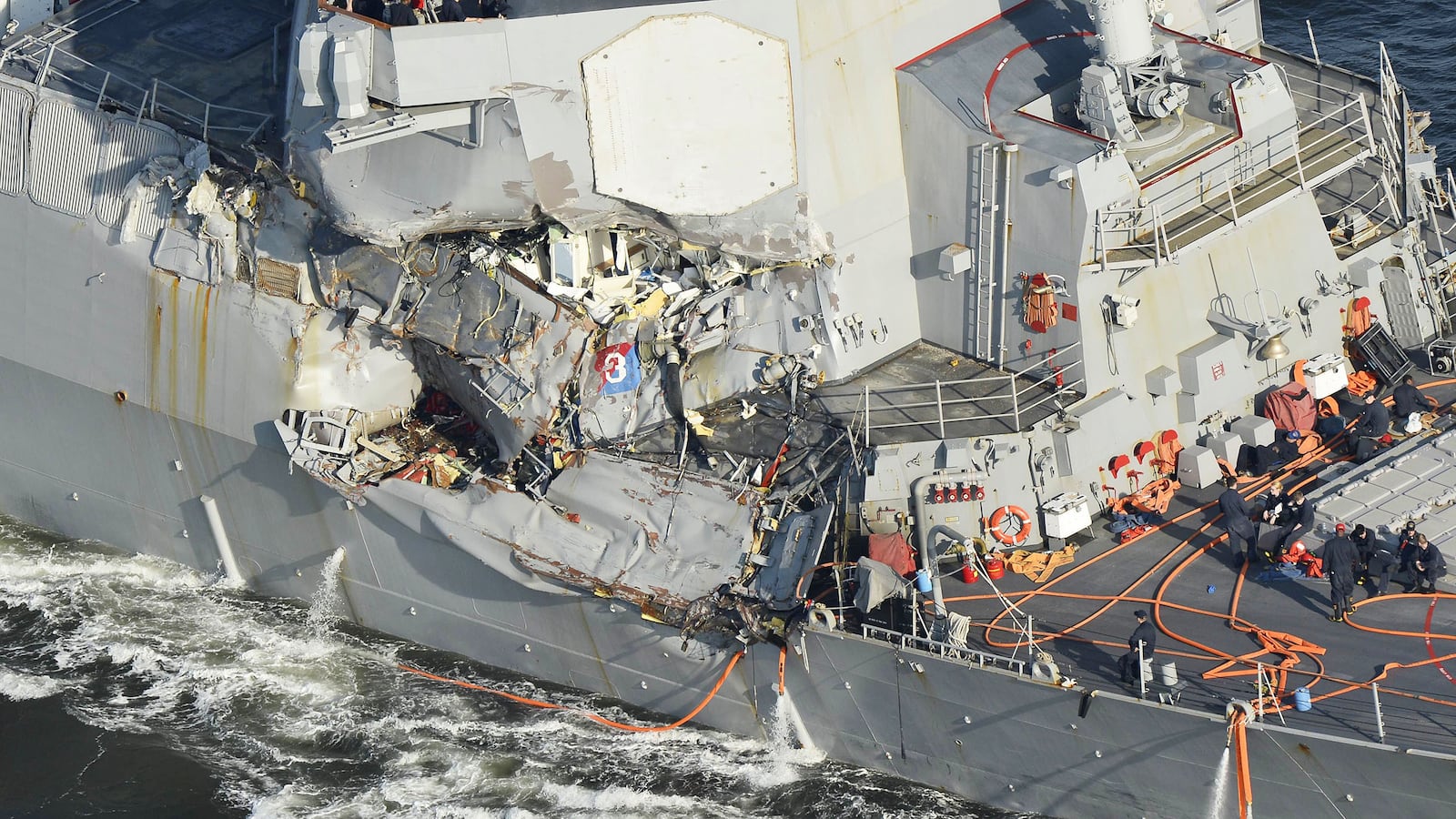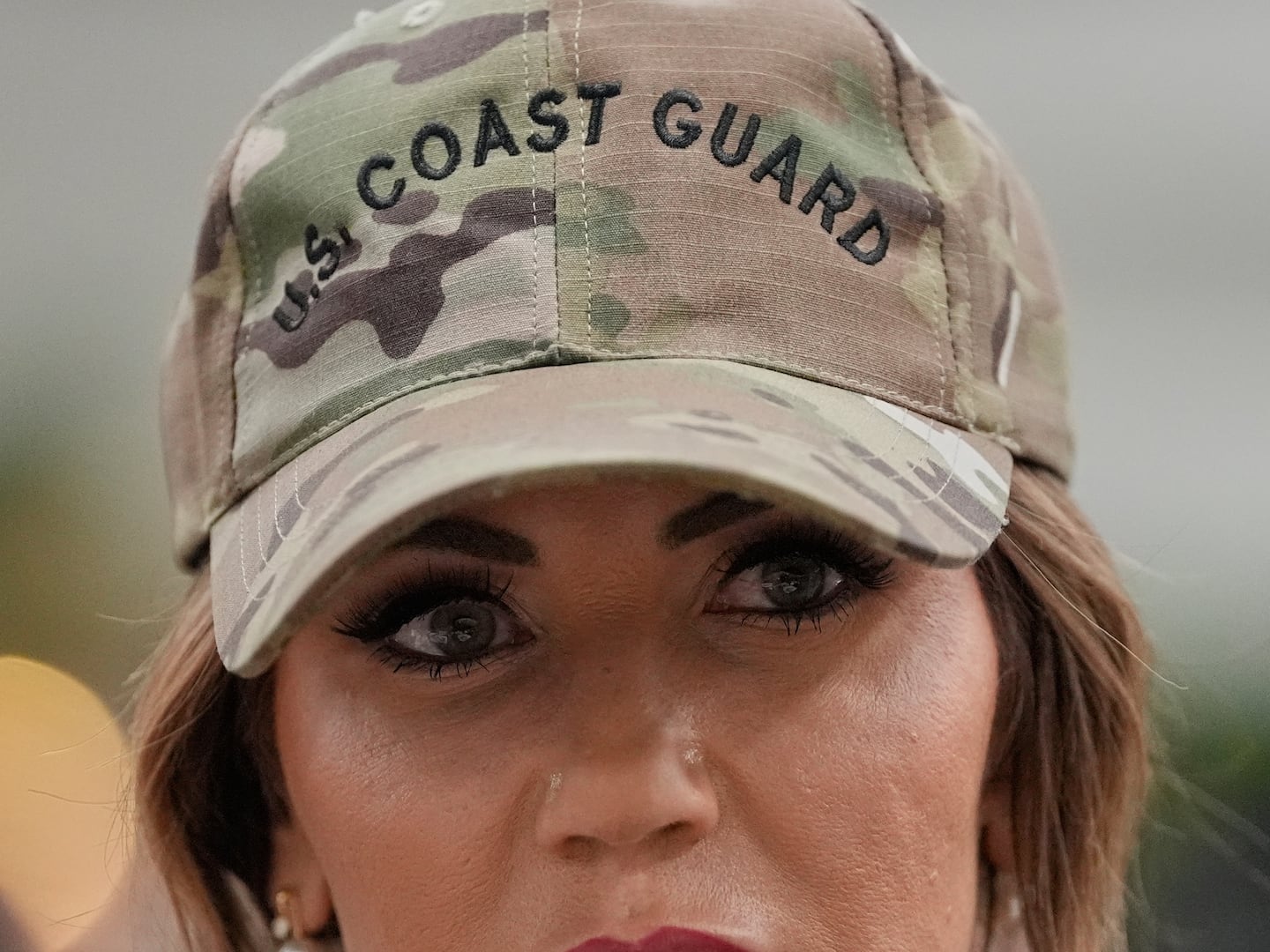In the wake of several back-to-back at-sea collisions, experts said the U.S. Navy is overstretched and underfunded. And more accidents could occur if the country doesn't devote more resources to its busy, worn-down fleet.
Early in the morning local time on Aug. 21, the destroyer USS John S. McCain collided with the merchant ship Alnic MC as the destroyer was passing through the Straits of Malacca near Singapore.
“Significant damage to the hull resulted in flooding,” the Navy reported. Five sailors were hurt. Another 10 crew were still missing when the warship limped back to Singapore later on Aug. 21.
The accidents are symptoms of an overworked fleet with tired and under-trained sailors and poorly maintained equipment, experts said.
Automatic “sequestration” budget cuts have sliced billions of dollars from Navy accounts in recent years, while at the same time the fleet has gotten busier bombing Islamic State and the Taliban and deterring North Korea and China.
“The force is fraying,” Bryan McGrath, a naval consultant with the Maryland-based Ferry Bridge Group, told The Daily Beast.
The Navy has ordered the fleet—which includes hundreds of warships, thousands of aircraft and nearly 700,000 active and reserve sailors and civilian employees—to take a one-day “operational pause” that could temporarily halt training and front-line missions.
Navy Secretary Richard V. Spencer said the sailing branch would “fully investigate” the Aug. 21 accident and other incidents as part of a wider review of conditions in the sailing branch.
One thing is already clear: deadly mid-sea collisions are becoming frighteningly common in the world's most powerful naval force.

The destroyer USS Fitzgerald collided with the merchant ship ACX Crystal off of Japan on the night of June 17, killing seven sailors. The Navy said it would discipline around a dozen members of Fitzgerald's crew, including the captain and second-in-command.
In May, the cruiser USS Lake Champlain struck a South Korean fishing boat but no one was injured. In August 2016, the submarine USS Louisiana hit the Navy support vessel Eagleview off the coast of Washington State.
“These kinds of incidents shouldn't be happening ever, much less with the unfortunate frequency we've been seeing,” Eric Wertheim, an independent naval analyst and author of Combat Fleets of the World, told The Daily Beast.
Similar circumstances have apparently contributed to a spike in Marine Corps air accidents and compelled the Corps to briefly halt all flights.
For months, the Navy has been warning of deepening problems with its ships, planes and sailors.
“It has become clear to me that the Navy's overall readiness has reached its lowest level in many years,” Adm.
William Moran, the vice chief of naval operations, told a congressional committee in February.
The warnings have gone unheeded as the Trump administration deploys more ships to more conflict zones, especially in the Pacific.
“Things have been very tense in the Pacific region as of late and the U.S. Navy has been at the pointy end of the spear, day in and day out ready to meet any threats head-on,” Wertheim said.
McGrath said that gaps in “basic training proficiency” could be exacerbating the underlying problems.
“I have a feeling what we are seeing is a witch's brew,” he said. Any single element, or more likely a mix of them could be to blame. But we'll just have to wait and see what the investigation and review uncovers.”
In any event, the Navy simply needs more money, McGrath said: “I realize that won't be satisfying, but that's the way it goes.”
The Trump administration has proposed adding billions of dollars to the Navy's budget for the 2018 fiscal year that begins in September.
But Congress has yet to approve the budget and might balk at Trump's plus-up. That worries some Navy leaders.
“Time is running out,” Moran warned in February, months before two destroyers collided with merchant ships and at least seven sailors died.






